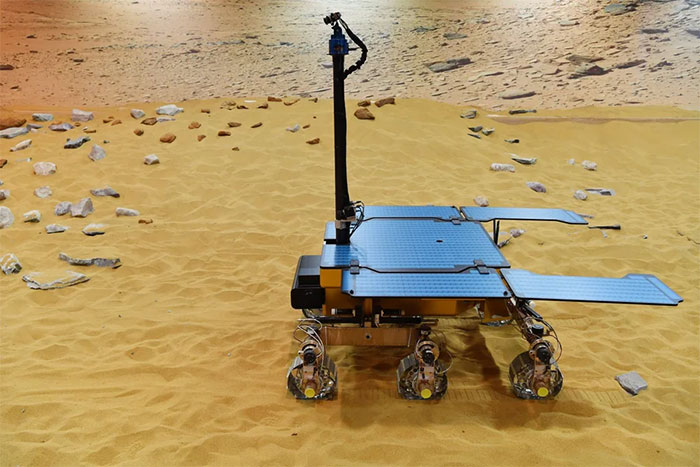The Rosalind probe will be launched to Mars in 2028
Europe once again embarked on an exploration of the planet Mars. The ExoMars mission, which involves sending a mobile robot to the Red Planet, just reached a major milestone.

Model of the Rosalind probe in Stevenage, England. (Photo: AFP/TTXVN).
According to reporters in Europe, the European Space Agency (ESA) and Thales Alenia Space of France and Italy announced on April 9 the signing of a contract worth 522 million euros to carry out this mission. I aim to launch the Rosalind probe at the end of 2028.
The framework contract signed by Thales Alenia Space company includes the development of take-off and landing modules, as well as maintenance and upgrade activities for vehicles already produced for the 2022 mission. Aviation Agency The American Aerospace Forces (NASA) will also cooperate in implementing the mission.
According to ESA, the rover will move autonomously on the Martian surface and will drill and explore deeper than any previous Mars mission. Robots will explore the surface of Mars to answer the question humanity has long asked: was there ever life on this planet?
Designed to drill up to two meters below the Martian surface, the rover will collect and analyze samples to detect signs of past or present life. Daniel Neuenschwander, Director of Human and Robotic Exploration at ESA, said this is an important step in the ongoing exploration of Mars.
ExoMars will be launched from NASA's Kennedy Space Center in Florida between October and December 2028 and will land on Mars in 2030.
- India launched a Mars probe
- NASA revealed the mission of the next Mars probe
- NASA launched the Mars probe
- India will bring the probe to Mars in 2013
- India successfully launched the spacecraft onto Mars
- The mysterious fate of the Mars probe
- The Mars probe is ready to land
- India's Mars probe boarded a 100,000 km orbit
- 90 days on Mars by Chinese probe
- India moved on the launch of the Mars probe
- America, Europe cooperate in exploring Mars
- NASA prepares a new mission on Mars
 Announced 3 houses on the Moon and Mars
Announced 3 houses on the Moon and Mars Science proves: Mars also knows 'deflated'
Science proves: Mars also knows 'deflated' Elon Musk announced the price for a Mars trip was 11.6 billion VND, free of charge
Elon Musk announced the price for a Mars trip was 11.6 billion VND, free of charge NASA discovered strange 'gate' on Mars, is the hiding place found?
NASA discovered strange 'gate' on Mars, is the hiding place found?